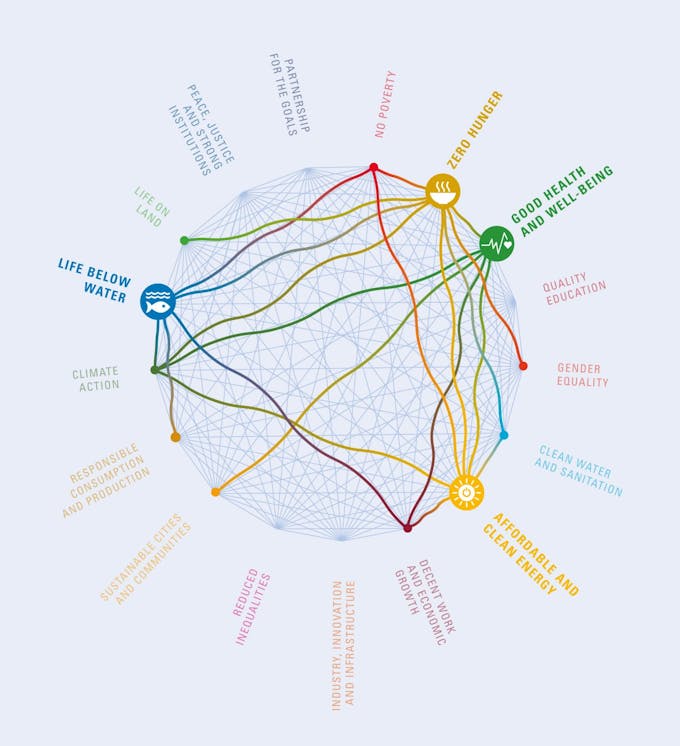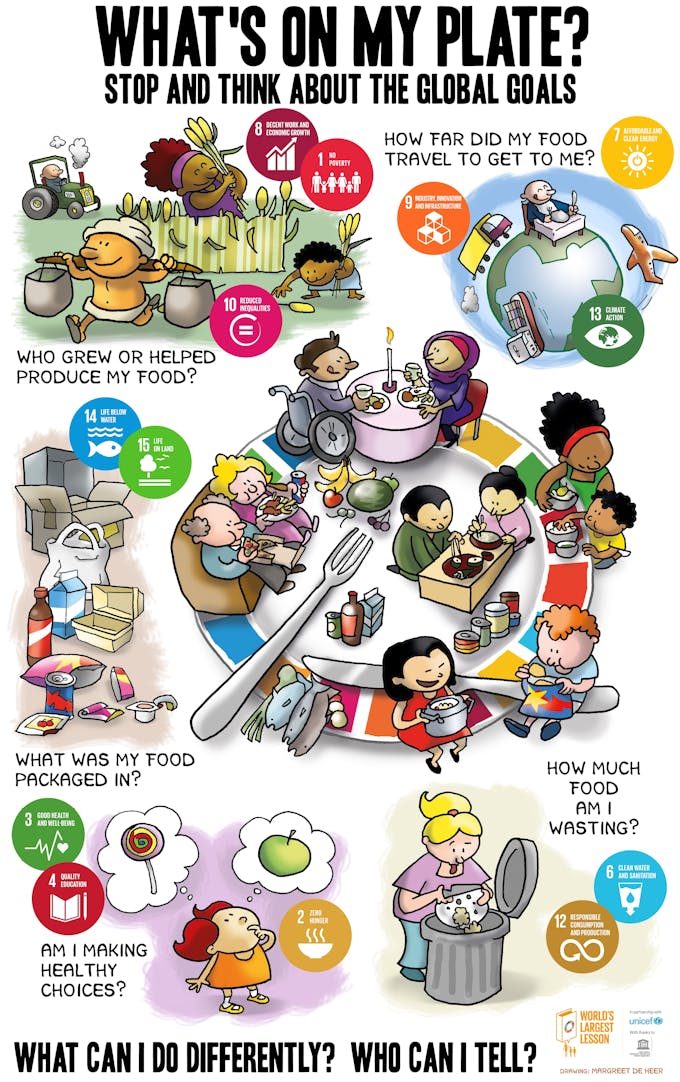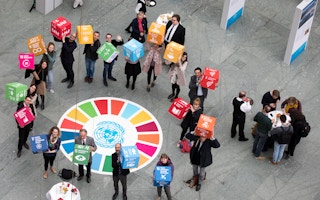Everyone talks about the Sustainable Development Goals (SDGs) but does anyone know what they really mean or how they work?
Here are six things to bear in mind when working towards the SDGs, based on reflections from a workshop featuring Alison Howard, Meridian Energy, Lisa Martin from seafood company Sanford Limited, Kate Alcock of the Sustainable Business Council, and Barbara Nebel from thinkstep.
1. Don’t be daunted
If you’ve looked at the list of goals and found the prospect of trying to apply them in a business context daunting, you’re not alone. The good news is, it doesn’t have to be.
The Sustainable Development Goals aren’t about reinventing the wheel and you’re probably already contributing in more ways than you realise. In fact, just by being a business you’re already contributing significantly to goal 8 (decent work and economic growth), likely goals 1, 2 & 3 (no poverty, zero hunger, and good health & wellbeing) and potentially also goals 5 and 12 (gender equality, and responsible consumption and production).
“The key is to work out which goals you can impact most and how,” says thinkstep’s Barbara Nebel. There are a number of tools available including the SDG Compass to help you work out which goals are most applicable
2. Use your value chain
The SDGs aren’t a one-size fits all approach, nor do they try to be. While SDG 14, life below water may have less direct relevance to a Swiss cheese maker than it does to New Zealand’s biggest seafood company Sanford Limited, your sphere of influence may be greater than you think.
Use your business value chain as a sounding board for finding context for the SDGs. For example, consider you’re a manufacturing business in NZ. SDG 1, no extreme poverty, might seem somewhat redundant given the UN definition of poverty is living on less than $1.25 a day.
However, if we take a step back and consider beyond our immediate operations, perhaps we import materials from countries where workers do live below the poverty line? In this instance specifying only ethically sourced materials would contribute directly to lowering global poverty. In a New Zealand context, the no-poverty goal has an underlying target for reducing poverty according to national definitions.
When considering our organisation’s business, we may also find that individual goals surface multiple times at different stages of the value chain. Focusing on these particular goals could be the opportunity for making the biggest difference.
3. You don’t need to focus on all 17 goals at once
Of the 17 goals, some will be more relevant to your business than others. Trying to tackle all of the goals at once may mean spreading yourself too thin and missing meaningful action. At New Zealand’s largest electricity generator Meridian Energy, Howard asked: “What are the SDGs where Meridian’s existence ‘shifts the dial for NZ’ and makes a massive difference?” Identified were SDGs 7 & 13 affordable & clean energy and climate action and these have become the guiding ‘north stars’ at Meridian.
Then there are other goals that are still very important to Meridian’s business (for example life on land), and goals where it is important as a good corporate citizen (for example gender equality) to show leadership, but without the same ability to make a big contribution to New Zealand’s effort in a global setting. In contrast, for organisations with a large workforce focusing on gender equality could be one of their ‘north stars’.\

The Global Goals are intertwined.
The goals are also intertwined. Improve living standards, but in a way that doesn’t impact climate change. Work towards zero hunger, along with sustainable agriculture and respect for life on land.
Our planet is a complex system, and the UN is keen to remind users of the SDGs that the goals are all interrelated. It might not be that easy to tie what you’re working on to just one goal, and you might find that three or four goals are all interwoven with the core purpose of your organisation.
“It’s important to watch out for unintended consequences,” says Nebel from thinkstep, “and there’s the opportunity to achieve even better outcomes by designing actions that work towards several goals at the same time.
4. How the SDGs add business value
“You can only understand how the SDGs add business value if you understand how sustainability adds business value,” says Howard. It’s well documented that purpose-led organisations are better financial performers than other organisations and Meridian recognise that “through creating value for others, we create value for ourselves and for our shareholders.”
The idea of the SDGs is popular with the Meridian Board, it means rather than Meridian flag-waving and saying that these things are important, it is the UN saying that they are important.

“Making the goals tangible at business level can be challenging,” says Sanford’s Lisa Martin. “However our materiality assessment assisted in this. A number of focus areas raised by stakeholders during this process correlated to the SDGs. The business case for anything that’s considered important to stakeholders becomes more tangible. We can ask ourselves, what do the issues mean for Sanford through our business lens?
“In this sense, the materiality assessment formed the basis for prioritisation of the SDGs. We then translate the global goals down to an organisational level in order to identify opportunities for action.”
5. The SDGs are not yet another framework
While the 17 SDGs have 169 specific targets, they are not indicators, and this is not a yet another new framework to report on. On the contrary. The UN encourages you to use the goals to guide your organisation’s business activities, and to work out what’s important to focus on, but reporting on your progress should be done using the existing frameworks and indicators that best suit your business and each issue.
For example, the GRI indicators “G4-EN8: Total water withdrawal by source” or “G4-EN9: Water sources significantly affected by withdrawal of water” are perfectly suited to report on SDG 6, clean water and sanitation.
Lisa explained that the SDGs are used at Sanford to validate the materiality assessment and help framing their integrated reporting. However, “it needs to go beyond simply adding the goals to your report where they best fit”. In Sanford’s 2016 integrated report, the relationship of specific business activities and business goals to key SDGs are described
6. Businesses and universities are driving the agenda
The UN says “For the goals to be reached, everyone needs to do their part: governments, the private sector, civil society and people like you.” The idea is simple, our actions combine to become the effort of New Zealand in the global setting.
Unfortunately, what we’re currently missing is information from the government on how New Zealand is performing against the goals, and what actions we are already taking to achieve them.
“
Get stuck in, choose a goal, make a start and grab a slice of the $12 trillion opportunity.
As a result it’s hard for businesses to judge where to put their focus to achieve the most impact for New Zealand. Our government has been slow to move and has not yet reported on our combined contributions.
But activity is underway in other sectors. A cross-sectoral working group including Victoria University of Wellington, AUT, Hui E!, the United Nations Association of New Zealand and Sustainable Business Council are shaping a summit for 300 delegates to inform, excite and mobilise the SDGs in New Zealand. It will be held on 23rd April at Victoria University and is an opportunity to discuss what SDGs should be prioritised for New Zealand.

Hopefully this will be the kick start our government needs. The feeling is that the longer we wait until we join the significant number of countries (113 in total) who have already reported, or committed to report in 2018, the harder it will be for us to catch up.
The UN SDGs are an exciting opportunity for government, civil society, NGOs, and very importantly business, to work together towards common goals to make the world a better place, for everyone, everywhere, forever.
So get stuck in, choose a goal, make a start and grab a slice of the $12 trillion opportunity. It doesn’t have to be perfect, just give it a go! Any action we take towards these goals takes us closer to the opportunity to live in a better world.
Florian Nebel is a Sustainability Economist and part of the corporate sustainability and materiality assessment team at thinkstep Australasia.











